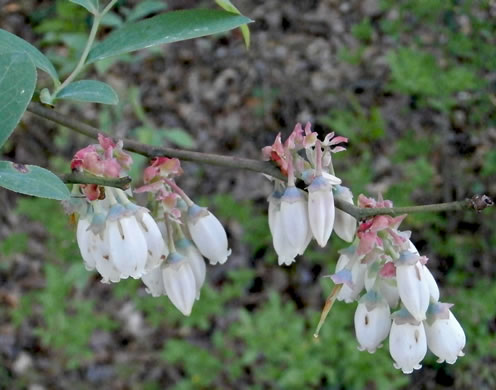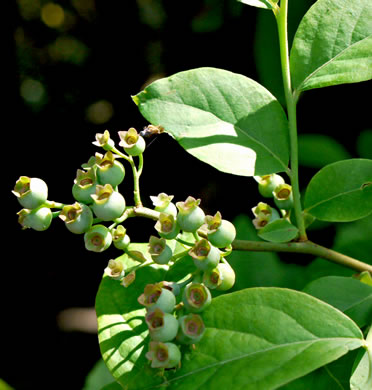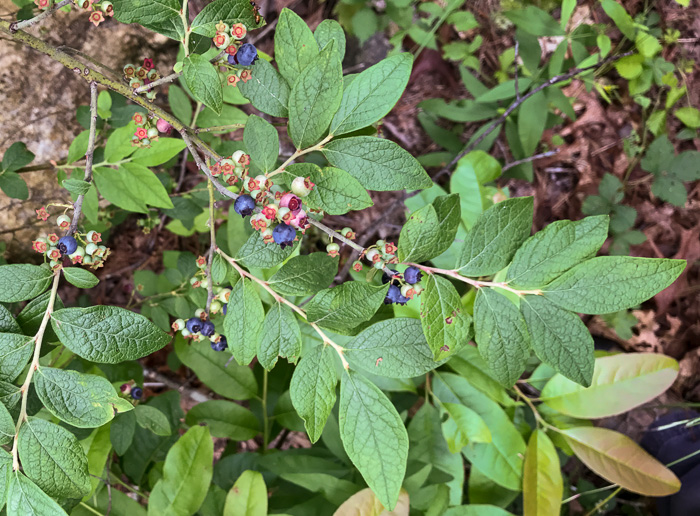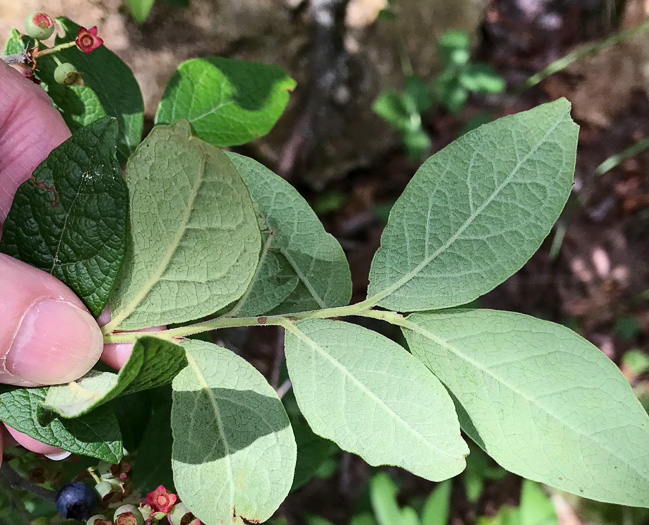Ericaceae
highbush blueberry
Vaccinium corymbosum
Synonyms
Cyanococcus corymbosus, Cyanococcus cuthbertii, Vaccinium constablaei, Vaccinium corymbosum var. albiflorum, Vaccinium corymbosum var. glabrum
Other Common Names
smooth highbush blueberry
Plant Type
Small Tree/Large Shrub (10-25 ft)
Life Cycle
Perennial
Typical Size
6-12 ft. tall
6-12 ft. wide
Tolerant of
Occasional Flooding
Inolerant of
Dry Soil
Propagation
By seed, By cutting
Plant Propagation Notes
Mostly propagated by softwood cuttings taken in spring.
Plant Planting Notes
Remove flowers when planting and the year after to divert energy to shoot and root production. Like other blueberry species, V. corymbosum requires acid soil, a pH of about 5.0 is ideal.
Plants/Diseases
Highbush blueberry can experience a few insect and disease problems. These include, stem blight, root rot, anthracnose, cane canker, mildew, and botrytis.
Wildlife Benefits
Nectar/pollen source for pollinating insects, Host plant for butterfly larvae, Fruit/seeds for birds
Leaves
The deciduous leaves are simple, alternate, elliptical to ovate with either entire or serrate margins. Approximately 1-3 inches long
Flowers
The white to pink flowers are bell shaped.
Fruit
The berries mature from green to pink to blue or blue/lavender.
Bark
Light brown to light gray, exfoliating and furrowed.
Toxicity
No known toxicity.
Edibility
Fruits are highly desirable for their nutrient and antioxidant content.
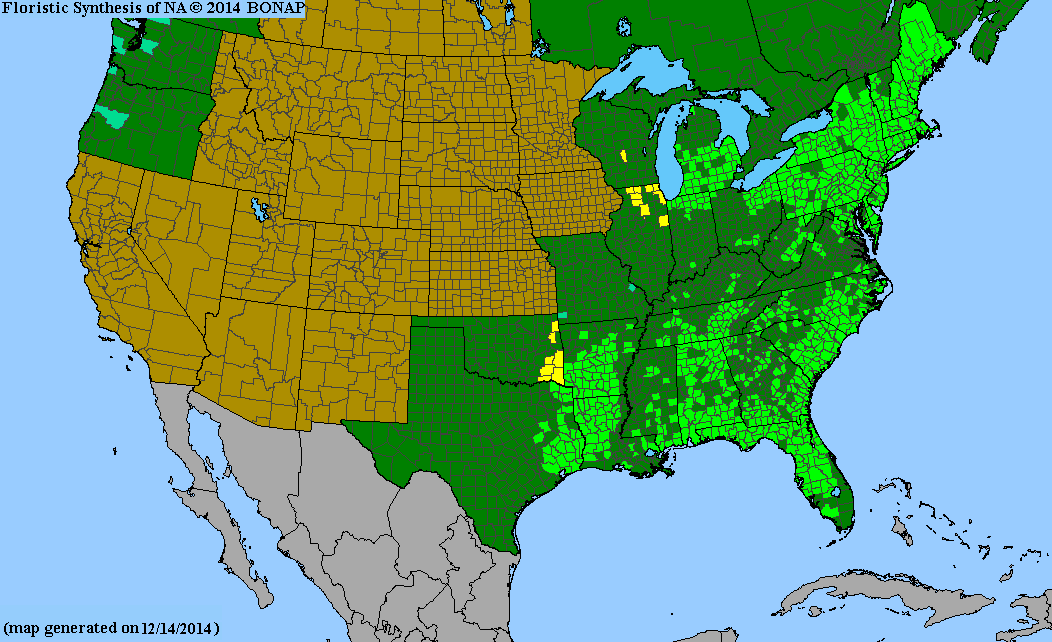
USDA Hardiness Zones
3, 4, 5, 6, 7, 8
Light Exposure
Full Sun, Part Sun/Shade
Soil Moisture
Medium, Moist
Soil Drainage
Well-drained
Soil pH
Acidic (less than 6.0)
Native in South Carolina?
Yes
Plant Native Habitat
Bogs, wet swamp forests, moist high elevation bogs, balds, and forests.
Global Conservation Status (NatureServe)
Secure (G5)
Federal Conservation Status (USFWS)
Not Listed
Distribution Notes
Common in the mountains, but rare in the piedmont.

